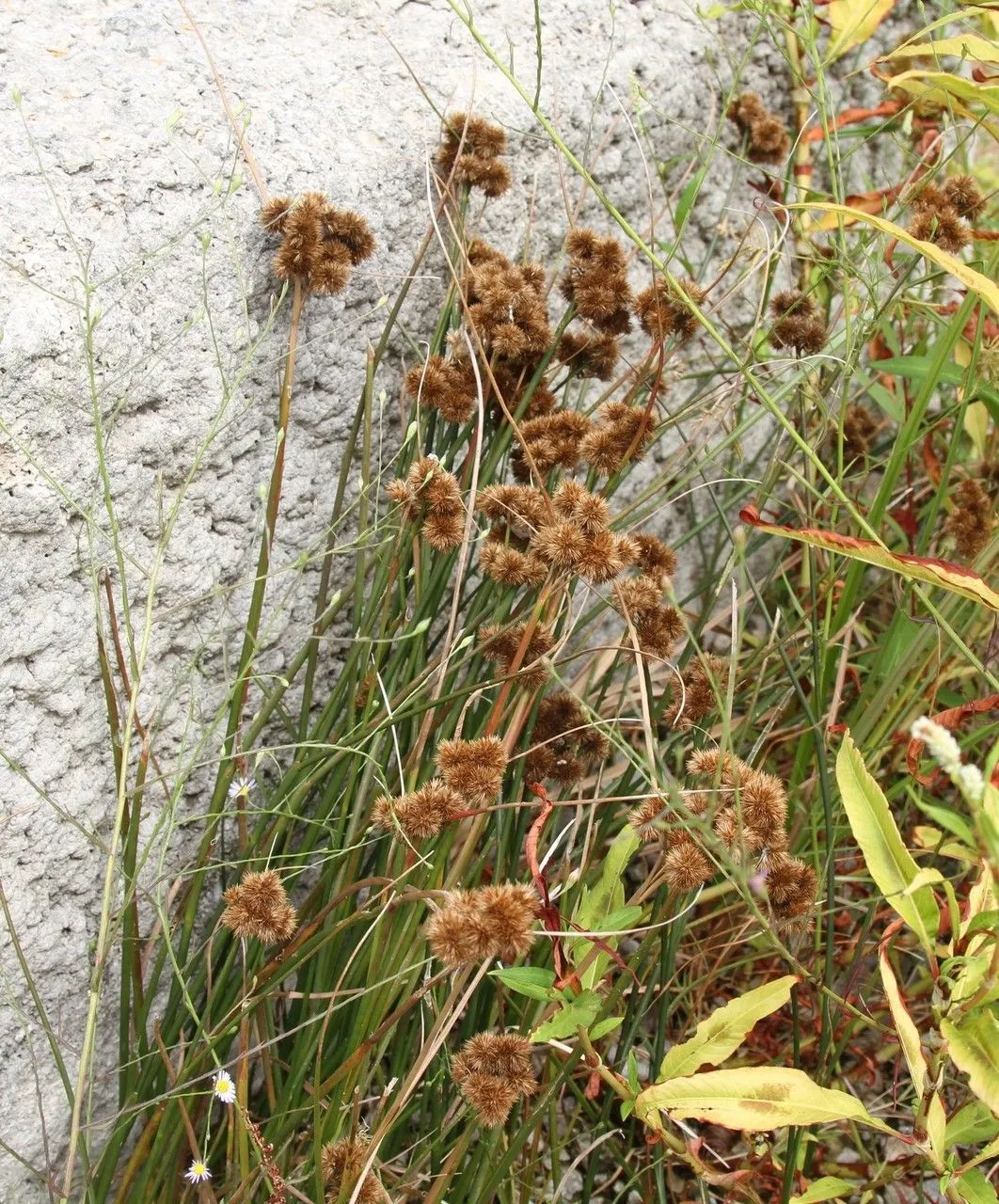
Author: Coville
Bibliography: Bull. Torrey Bot. Club 22: 303 (1895)
Year: 1895
Status: accepted
Rank: species
Genus: Juncus
Vegetable: False
Observations: Canada to N. Mexico
Torrey’s rush, known scientifically as Juncus torreyi, is a notable member of the Juncaceae family. This perennial rush species was first described by Coville in 1895, as detailed in an article in the Bulletin of the Torrey Botanical Club.
Juncus torreyi is found across a vast range extending from Canada to northern Mexico, showcasing its adaptability to various climates and habitats across North America. The plant typically thrives in wetlands, marshes, and along the edges of ponds and streams, where it contributes to the local biodiversity and serves as a crucial component of the ecosystem.
Torrey’s rush is characterized by its sturdy, cylindrical stems and dense clumps, which can create substantial stands in suitable wetland environments. Its foliage is generally a vibrant green, providing a lush appearance that contrasts with the often arid surroundings of its more southern habitats. The inflorescences of Juncus torreyi are particularly distinctive, consisting of small, clustered flowers that emerge from the sides of the stems, contributing to its unique appearance among rushes.
One of the key ecological roles of Torrey’s rush is its ability to stabilize soil and reduce erosion. Its robust root systems help anchor the soil in wetland areas, making it an important plant for conservation and restoration projects. Furthermore, the dense growth of Juncus torreyi provides habitat and shelter for a variety of aquatic and semi-aquatic wildlife, including insects, amphibians, and birds.
In summary, Torrey’s rush (Juncus torreyi) is a resilient and ecologically valuable plant species that spans a wide geographic range from Canada to northern Mexico. Its presence in wetlands and marshy areas plays a significant role in maintaining ecosystem health and providing habitat for wildlife. First documented in detail by Coville in 1895, this member of the Juncaceae family continues to be an essential component of North American wetland environments.
Eng: torrey rush, torrey’s rush
Fra: jonc de torrey
En: Torrey’s rush, TORREY RUSH
Fr: Jonc de Torrey
Taken Jun 22, 2020 by Kendra RaiderNature (cc-by-sa)
Taken Jun 22, 2020 by Kendra RaiderNature (cc-by-sa)
Taken Jan 1, 1900 by EOL − This image is not copyrighted and may be freely used for any purpose. Please credit the artist, original publication if applicable, and the USDA-NRCS PLANTS Database. The following format is suggested and will be appreciated: Jennifer Anderson @ USDA-NRCS PLANTS Database If you cite (public)
Taken Sep 10, 2015 by EOL − bendingtree (cc-by-nc)
Taken May 20, 2022 by Fred Ethève (cc-by-sa)
Taken Jun 8, 2022 by dude sailaway (cc-by-sa)
Taken Aug 15, 2021 by Richard Wideman (cc-by-sa)
Taken Jul 4, 2020 by stan sperlak (cc-by-sa)
Taken Aug 21, 2020 by Kendra RaiderNature (cc-by-sa)
Taken Jan 3, 2016 by EOL − Bob O’Kennon (cc-by-nc)
Taken Nov 20, 2013 by EOL − Daniel Carter (cc-by-nc)
Taken Jan 1, 1900 by EOL − John Hilty (cc-by-nc)
Taken Nov 20, 2013 by EOL − Ben VanderWeide (cc-by-nc)
Taken Jan 1, 1900 by EOL − John Hilty (cc-by-nc)
Growth form>: Rhizomatous
Growth habit>: Graminoid
Growth rate>: Moderate
Ph maximum: 6.5
Ph minimum: 4.5
Family: Myrtaceae Author: (F.Muell.) K.D.Hill & L.A.S.Johnson Bibliography: Telopea 6: 402 (1995) Year: 1995 Status:…
Family: Rubiaceae Author: Pierre ex A.Froehner Bibliography: Notizbl. Bot. Gart. Berlin-Dahlem 1: 237 (1897) Year:…
Family: Sapindaceae Author: Koidz. Bibliography: J. Coll. Sci. Imp. Univ. Tokyo 32(1): 38 (1911) Year:…
Family: Asteraceae Author: A.Gray Bibliography: Pacif. Railr. Rep.: 107 (1857) Year: 1857 Status: accepted Rank:…
Family: Fabaceae Author: Medik. Bibliography: Vorles. Churpfälz. Phys.-Ökon. Ges. 2: 398 (1787) Year: 1787 Status:…
Family: Aspleniaceae Author: (Cav.) Alston Bibliography: Bull. Misc. Inform. Kew 1932: 309 (1932) Year: 1932…